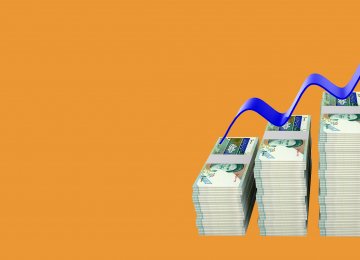Money supply reached 13.9 quadrillion rials ($312.35 billion) in the second quarter of the current Iranian year to Sept. 22, 2017, marking a growth of 10.9% compared with the same period of last year.
However, despite the fact that the country's liquidity is continuing to surge, its growth ratio had significantly declined compared with the past trends.
According to the latest data published by the Central Bank of Iran for the Q2 economic indicators, liquidity’s growth ratio in the last Iranian fiscal to March 20, 2017, exceeded 23.2% while the figure for its previous year reached 30%.
As the CBI’s data indicate, the growth of monetary base has been considerably faster than the volume of money in circulation. The monetary base exceeded 1.9 quadrillion rials ($42.69 billion) by the end of Q2 to mark an increase of 9.3% compared with the corresponding figure of last year.
The collective figure of printed money reached 1.68 quadrillion rials ($37.75 billion) by the end of the first half of March 2017-18, up by 3.2% year-on-year.
By the end of the current year’s first half, the total volume of money in circulation marked a YOY decline of 12.4% to reach 344.7 trillion rials ($7.74 billion).
According to the report, the volume of both sight and non-sight deposits increased during the second quarter of this year. The collective figure of sight deposits in banks reached 1.33 quadrillion rials ($28.88 billion), registering an increase of 8.1% compared with the previous year’s same period.
However, the collective figure of non-sight deposits still outweigh sight ones, as its reached 12.2 quadrillion rials ($274.1 billion) by Sept. 22, up by 12% YOY.
NPLs and Arrears
The report also assessed the ratio of banks’ non-performing loans in both foreign currencies and rial.
The ratio of Iranian banks’ NPLs in rial by the end of the current fiscal’s first half reached 10.9%, which indicate that the figure increased by 14.7% year-on-year.
This is while the ratio of banks’ foreign exchange non-performing loans stood at 12.4% during the same period. The figure for previous Iranian year exceeded 13.2%.
The report also indicates that banks’ reserve requirement and sight deposits in CBI by the end of H1 increased by 12.9% and 49%, respectively. The figure for banks’ reserve requirement with the CBI crossed 1.4 quadrillion rials ($31.46 billion) while their sight deposits stood at 88.5 trillion rials ($1.98 billion).
This is while the figure of commercial banks’ debts to the regulator had significantly increased.
The figure of specialized banks’ debts to CBI as of Sept. 22 reached 494.4 trillion rials ($11.11 billion), which indicate an annual drop of 13.7%. However, commercial banks’ debts to CBI surged by 90.7%, year-on-year, to reach 502.5 trillion rials ($11.29 billion).
Government arrears to CBI by the end of the current Iranian year’s first half reached 370 trillion rials ($8.31 billion), marking an increase of 35.1% YOY.
Companies and organizations affiliated with the government are also big borrowers from the central bank, as the total volume of arrears reached 302.3 trillion rials ($6.79 billion) by the end of the aforementioned time, up by 9.4% YOY.
CBI’s data also note that the collective volume of both government and private sector’s arrears to the banking system by the end of H1 reached 12.28 quadrillion rials ($275.95 billion) to register a YOY growth of 8%.






Add new comment
Read our comment policy before posting your viewpoints